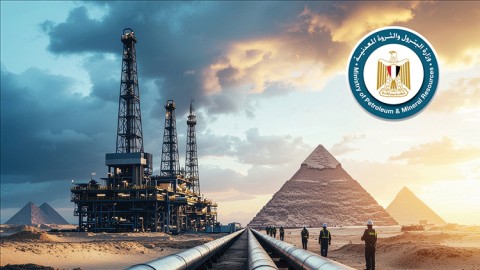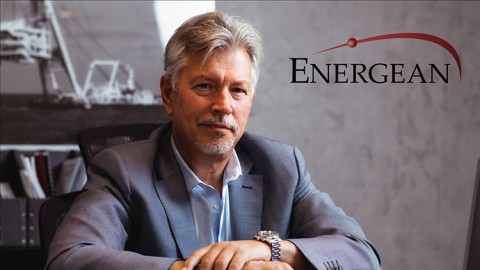Hydrogen as an energy carrier and feedstock has clearly gained momentum in the past years. It is referred to as the “missing link” in the transformation of the energy system. Alan Finkel, Australia’s Chief Scientist, describes it saying, “imagine a zero-emissions fuel that exists on earth in abundance can be easily extracted using basic chemistry and offers jobs… It’s called hydrogen.” Not only can a hydrogen-based economy play a vital role in mitigating the impacts of global warming, but it can also reinvigorate the world economy.
New Ally for Decarbonization
To start with, the necessary shift of today’s global markets towards a sustainable future can only be achieved by integrated hydrogen production systems. In order to achieve the net-zero emissions goal by 2050, hydrogen would have to play a bigger role in the world’s energy market, according to a report by the International Energy Agency (IEA, 2019).
Hydrogen is regarded as the key to decarbonizing hard-to-abate sectors, as the Hydrogen Council expects that this promising fuel will contribute greatly to the transportation, industrial, and energy sectors.
Therefore, large-scale production of hydrogen is crucial to meet the rising demand for it in all sectors. However, the challenge with hydrogen is that it is mainly produced through fuel-based processes, such as methane reforming, coal and biomass gasification; all of which will increase carbon emissions. For further illustration, hydrogen produced from hydrocarbon resources is classified as “grey” hydrogen, which makes up the majority of global hydrogen production.
On the other hand, green hydrogen is carbon-neutral fuel, as it is produced from hydrocarbon-free renewable resources or via electrolysis of water. Hence, the future lies in the transition from ‘grey’ to ‘green’ hydrogen.
Catherine Robinson, Executive Director on the Gas, Power, and Energy Futures team at IHS Markit, noted that green hydrogen is a real game-changer for future fuels. “Investment in electrolysis is booming around the world,” Robinson said. “The pipeline through 2030 is for over 23 GW of capacity to be developed — more than 280 times the current capacity.” Furthermore, investment in green hydrogen production is set to exceed $1 billion per year by 2023, according to American-British information provider IHS Markit.
Several countries have recently published national hydrogen strategies, including Argentina, Australia, Chile, and China. Having seen clean hydrogen as a new commodity, other countries are expected to follow in the same footsteps. For instance, Egypt plans to take measured steps toward developing a hydrogen-based economy.
Green Hydrogen Opportunity in Egypt
Realizing that hydrogen and renewable energy will be the main drivers toward global reductions of greenhouse gas emissions, Egypt invests in renewable markets and has set targets to increase its renewable energy share, as part of its Integrated Sustainable Energy Strategy 2035. To illustrate, the government has set a target for renewables to make up 42% of the country’s production of electricity by 2035, based on rapid wind and solar deployment.
Dr. Samir Tantawi, UNDP Project Manager, affirmed that “Egypt has a promising potential in renewable energy, particularly wind and solar projects, such as the wind farms installed in Gabal Elzeyt and Zafranaa (Suez Gulf) and PV solar energy projects in Benban (Aswan) and small-scale PV project under the net-metering scheme.”
Researchers suggest that wind will be at the center of the green hydrogen revolution. As a manifestation, Siemens Gamesa and Siemens Egypt are developing an innovative solution that fully integrates an electrolyzer into an offshore wind turbine as a single synchronized system to directly produce green hydrogen.
In addition, Egypt doesn’t have only the capability to produce its own hydrogen fuel, but it has also the potential to export hydrogen to other countries. Moving forward, Egypt’s long-term strategic policies and investments seek to play a bigger role in the world’s energy market. To achieve this aim, Siemens Energy has signed a memorandum of understanding with Egyptian Electricity Holding Company (EEHC) to jointly develop a pilot project, compromising 100 to 200 MW of electrolyzer capacity. Additionally, Italian energy giant Eni has also signed an agreement with the EEHC and the Egyptian Natural Gas Holding Company (EGAS) to assess the technical and commercial feasibility of projects for the production of hydrogen in the country. The study will also try to investigate what potential hydrogen has in terms of local market consumption and export opportunities.
Moving to solar energy, Egypt’s Solar Atlas states that Egypt is considered a “sunbelt” country with 2,000 to 3,000 kWh/m2/year of direct solar radiation. Egypt also has the world’s largest solar park, Benban. Composed of 32 individual plants, each producing 20-50 MW, the park generates almost 1.5 GW of power. Sunlight can directly or indirectly provide the energy to produce hydrogen. Using solar energy, experts will have the power they need to produce hydrogen through processes including solar thermochemical production, photoelectrochemical production, electrolysis, and photobiological production.
That is to say, Egypt has a rich mix of renewable energy resources, a strong industrial base, and access to markets. These three factors provide a solid foundation for the country to build a robust green hydrogen industry.
On a global level, Egypt, as Tantawi stated, is a main player in climate change negotiations under the United Nation Framework Convention on Climate Change (UNFCCC), and potentially designated to host the next Conference of Parties (CoP) of the UNFCCC – COP23 in Sharm Elsheikh in 2022.
With a well-planned roadmap, Egypt is heading towards green recovery.
Challenges and Prospects
There are still some challenges that hinder the realization of a hydrogen-based economy, which include safety concerns and large-scale hydrogen production costs.
The potential hazards involved with hydrogen production is an important challenge that must be addressed before any widespread use can be achieved. As far as flammability and explosion risk factors are concerned, hydrogen resembles natural gas to some extent. Although hydrogen is a flammable gas with a wide flammability range (4–75% by volume) and relatively low ignition energy (0.02 millijoules) (Schmidtchen, 2009), it disperses very quickly when released. In case of leaks, it was found that hydrogen fuels are safer than hydrocarbon-based fuels, such as gasoline, because they rise rapidly and dissipate quickly into the atmosphere (Pozzi, 2017).
The production costs are another challenge facing the role of green hydrogen in the energy market. The IEA announced that the recent drop in electricity prices due to renewables, such as solar and wind, indicates that production costs maybe 30% lower within a decade. Thus, the integration of renewable energy resources is the key to making economic and sustainable process for hydrogen production.
Experts have thus concluded that green hydrogen is one of the most suitable energy carriers from both the technological and environmental perspectives.








